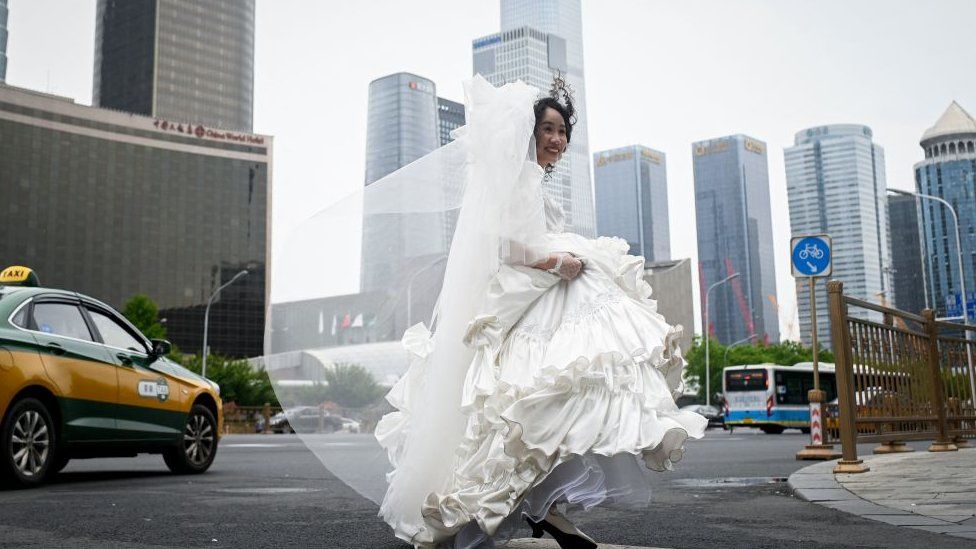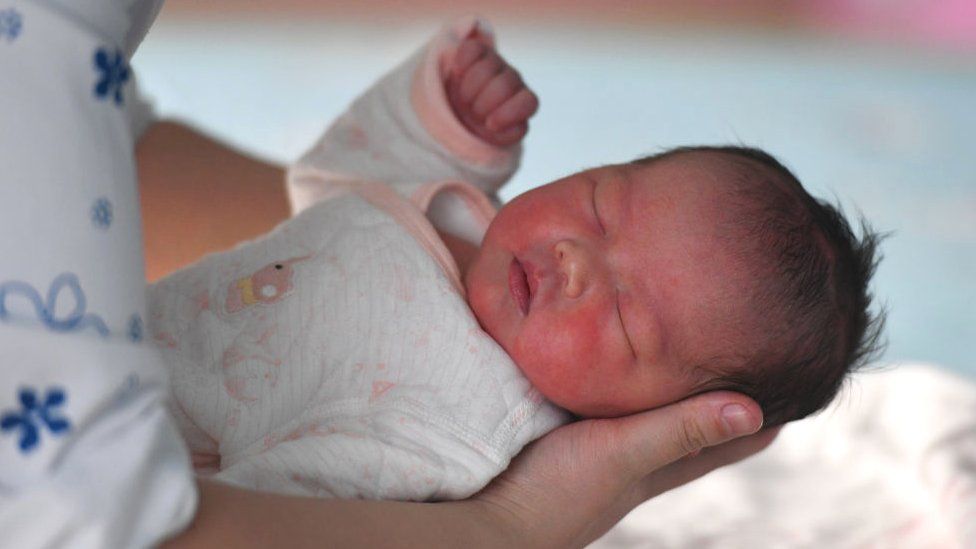
The number of couples in China choosing to marry has gone up for the first time in nine years.
In 2023 there were 7.68 million newlyweds in the country, 12.4% more than in the previous year, data shows.
The Ministry of Civil Affairs said there were 845,000 more marriages than in 2022. A record 13.47 million tied the knot in 2013.
It comes as the government campaigns to promote marriage in its latest bid to target record-low birth rates.
China has seen falling birth rates for decades after imposing a controversial one child-policy in the 1980s to control over-population at the time. Changes to the policy were introduced in 2015 and 2021 to try and boost population figures.
Earlier this month, China’s Premier Li Qiang pledged that the government would work towards “a birth-friendly society and promote long term, balanced population development.”
The country’s state planner also vowed in a report published in March to improve policies to boost birth rates by reducing the cost of childbirth, parenting and education, and also refine parental leave policies.
China’s population fell for a second consecutive year in 2023 with a record-low birth rate, and deaths due to the Covid-19 pandemic.
Many in China had been choosing to stay single during an economic slowdown. Young women have also been wary of tying the knot over concerns that revised property laws favour male ownership.
The latest figures also show the number of couples filing for divorce in 2023 went up – a total of 2.59 million couples registered for uncontested divorces – where neither spouse objects. The Ministry of Civil Affairs has not yet released the number of those being contested.
As well as this, policymakers are also grappling with a rapidly ageing population, with roughly 300 million Chinese people expected to retire in the coming decade – the equivalent of almost the entire US population.
As marriage rates are closely tied to birth rates, some observers expect an uptick in marriages could lead to more babies.
The government lifted its one-child policy back in 2015 to try to stem the population fall, and has brought in a series of other incentives too, such as subsidies and payments to encourage people to start families. In 2021, it further relaxed the limit to allow couples to have up to three children.
China is not the only major economy in Asia trying to tackle falling birth rates and a rapidly ageing population.
South Korea has the lowest birth rate in the world and its population is expected to halve by 2100, Japan recorded a record-low 800,000 births in 2022, and last year the Hong Kong government announced they would hand out HK$20,000 (£2,010) for each newborn in a bid to tackle the city’s low birth rate.
-
-
11 November 2023

-
-
-
29 July 2023

-
Source: bbc.co.uk



